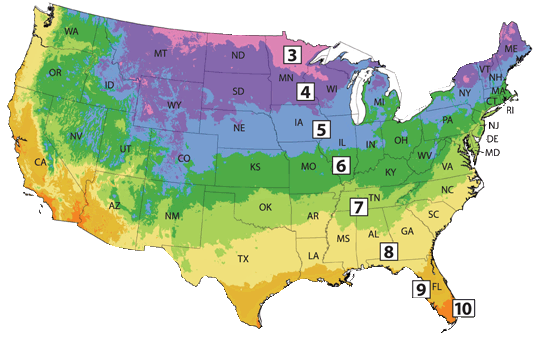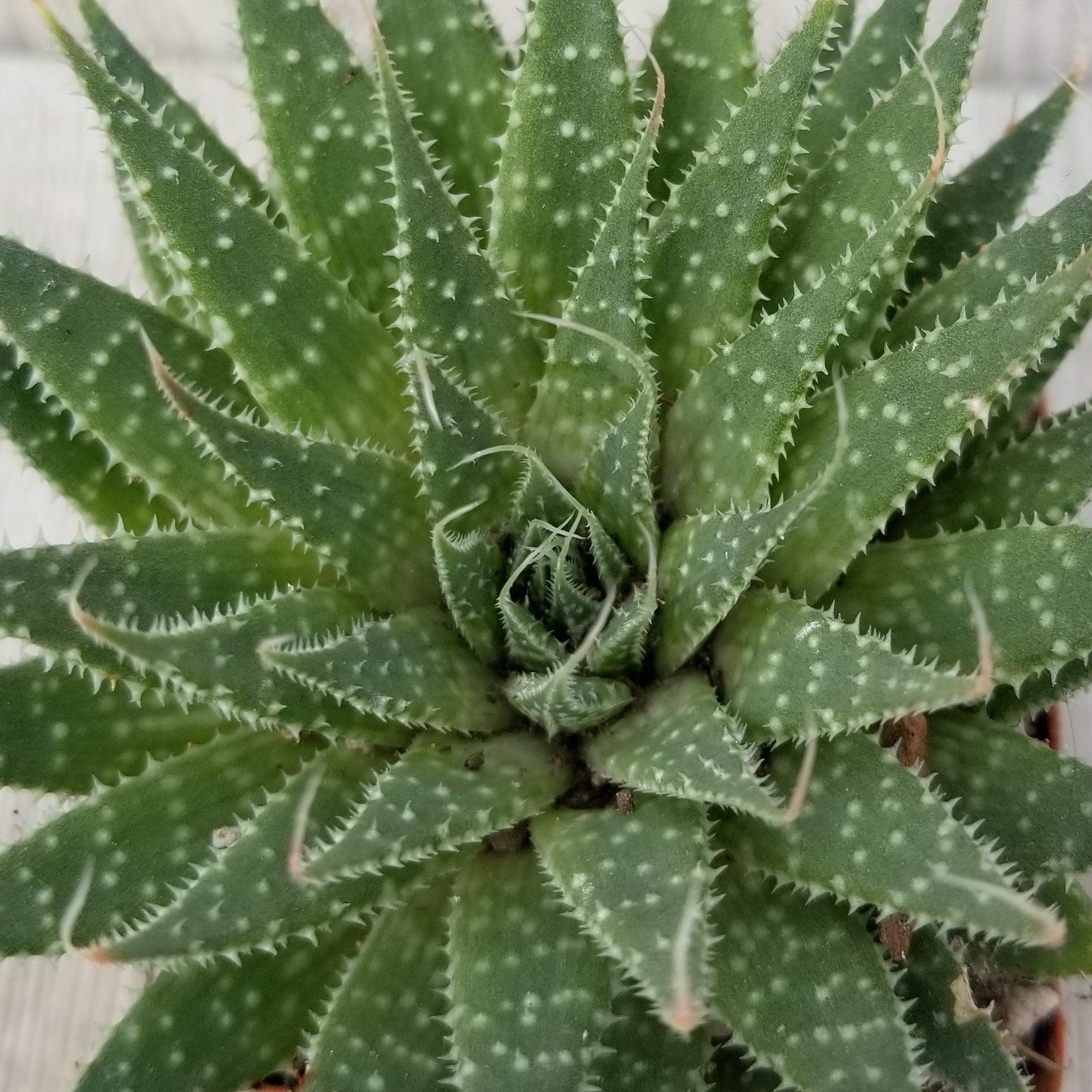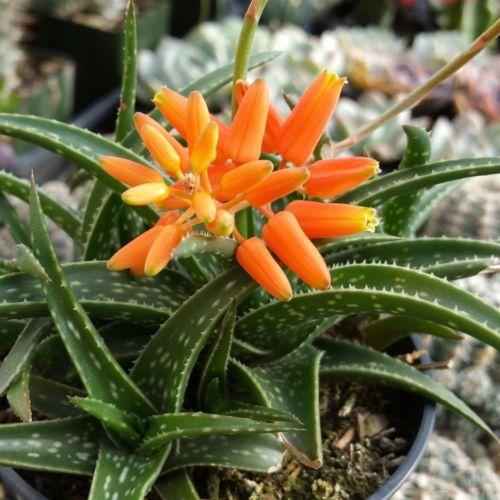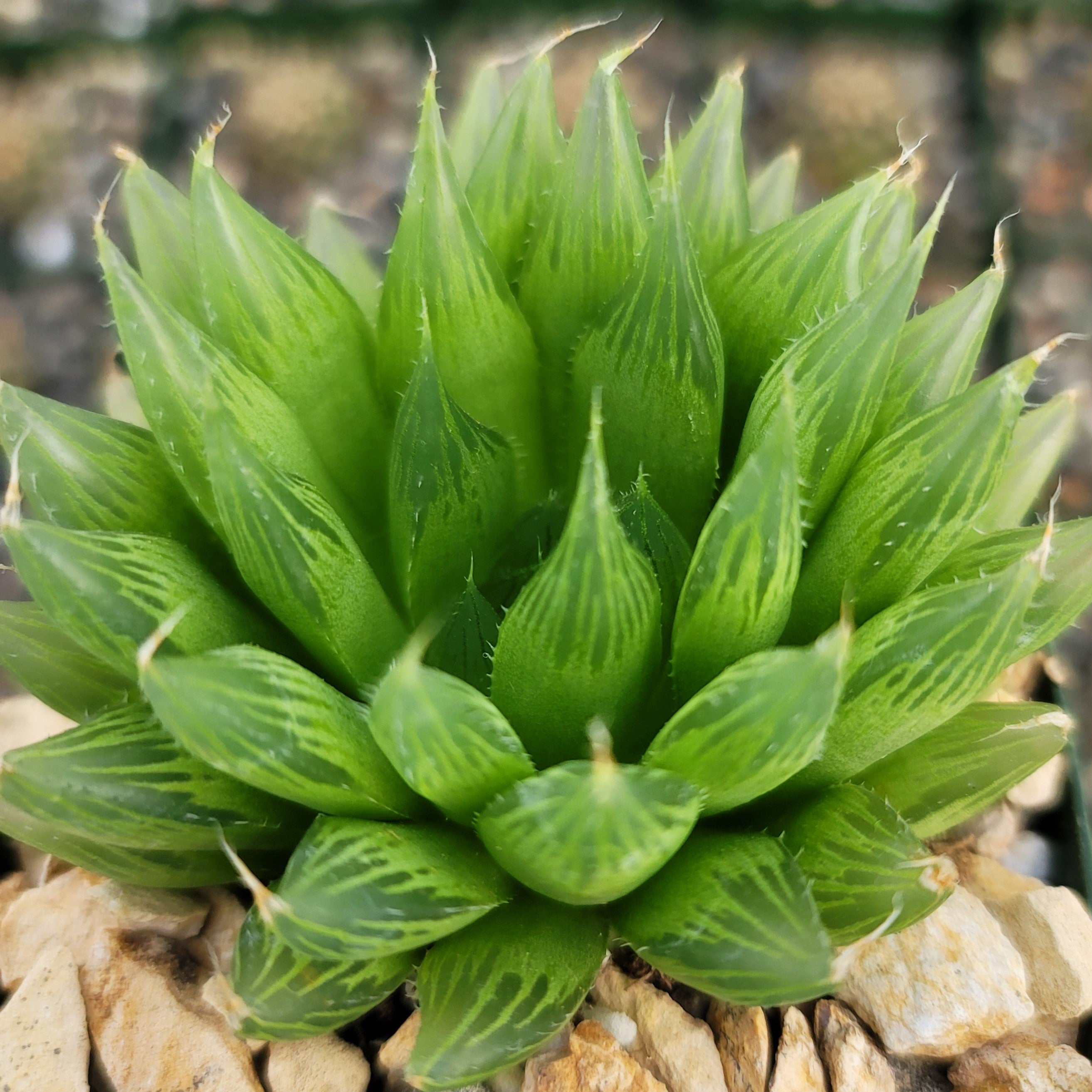Holiday Cactus Plants - Christmas Cactus Vs. Thanksgiving Cactus Vs. Easter Cactus - What's the Difference?
Updated: January 28, 2025

The 3 main types of Holiday Cactus are all low-maintenance plants with amazing flowers that bloom throughout the different holiday seasons. From the vibrant blooms of the Christmas cactus to the festive foliage of the Thanksgiving cactus and the delightful colors of the Easter cactus, these holiday cactus plants bring a touch of nature's beauty to our celebrations.
Despite their name, holiday cacti are not actually true cacti; they belong to the group of epiphytic or lithophytic plants, which means they grow on other plants or rocks. However, they can also thrive in well-drained soil once they are established in their new environment.
Holiday Cactus can live for up to 100 years! Most of the winter plants, which we refer to as holiday cacti, are passed down as family heirlooms from one generation to the next! Therefore, it's not unusual for someone to own a Christmas cactus plant whose origin is unknown.
Let's Explore the Different Types of Holiday Cactus
A lot of people are confused about the difference between Christmas, Thanksgiving, and Easter Cacti for their home or indoor gardening space. Are they different or similar?
Below you will learn about the subtle differences between the 3 types of holiday cactus and discover essential care tips for these unique plants.
Each Type Blooms at a Different Time

Holiday cacti earn their names because they tend to bloom around specific holidays, adding a touch of natural beauty to our festive decorations.
- The Christmas cactus blooms first from late November to late January and twice in the spring if given the shorter day conditions. It's a popular choice for adorning your homes during Christmas time.
- The Thanksgiving cactus blooms from late October to November around the Thanksgiving holidays.
- The Easter cactus blooms around Easter.
Why Real Christmas Cactus are Rare and Hard to Find?
During the Christmas season, a lot of plants that are marketed as types of Christmas cacti are actually not true Christmas cacti at all. These plants are usually hybrids of Thanksgiving cacti, which are similar but not exactly the same, and are marketed as Holiday cactus. The growers manipulate the blooming process to make them flower around Christmas time. By carefully controlling the duration of light and darkness, they can trigger the plants to bloom around Christmas time.
How to identify the Holiday cactus Types - Basic Differences
When it comes to identifying your holiday plants, it's understandable that there can be some confusion.
To determine the type of Holiday cactus you have, there are 3 main things to look for:
- The shape of the stem segments
- The time of year they bloom
- Their growth habits
Explore the Unique Shapes of Holiday Cacti:
First, take a look at the shape of the stem segments.
- The Christmas cactus has smooth and scalloped stem segments.
- The Thanksgiving cactus has more pronounced, pointed segments.
- The Easter cactus has stem segments that are more rounded in appearance.
Unveiling the Diverse Blooming Schedules:
Another way to differentiate these cacti is by observing the time they typically bloom.
- The Christmas cactus blooms in late fall or winter.
- The Thanksgiving cactus blooms in late fall around Thanksgiving.
- The Easter cactus blooms in the spring around Easter.
Exploring the Diverse Growth habits of Holiday Cacti:
Each variety of holiday cactus has unique flowers.
- The Christmas cactus has tubular-shaped, symmetrical, and vertically oriented blossoms.
- Thanksgiving cactus blooms are asymmetrical and hang down from arching downward stems; however, the blossoms appear more horizontally.
- The flatter, star-shaped flowers of Easter cacti often point upward.
The 3 Holiday Cactus Types

1
Christmas Cactus
SHOP AT PLANET DESERTkeypoints:
- USDA Hardiness Zones: 10-11-12
- Color varieties: Pink, red, orange, white, purple
- Blooming Period: December–February
- Shape: Smooth, Scalloped flat stem segments
The Christmas cactus (Schlumbergera bridgesii) is a popular holiday plant cherished for its vibrant blooms. This cactus features flat and smooth phylloclades that resemble leaf-like structures. In their natural habitat, the cloud forests of Brazil, the Christmas cactus is an epiphytic plant that naturally grows on trees rather than in soil. It produces stunning flowers in shades of red, pink, and white, typically blooming in late fall or winter, making it a delightful addition to festive decorations. When growing Christmas cactus indoors, it prefers bright, direct sunlight. The Christmas cactus is a favorite among plant enthusiasts for its unique appearance and ability to thrive in indoor and outdoor garden with proper care. Learn more...

2
Thanksgiving Cactus
SHOP AT PLANET DESERTkeypoints:
- USDA Hardiness Zones: 9-10-11
- Color varieties: Pink, red, orange, white
- Blooming Period: Mid-November – Until New Year
- Shape: More Pronounced - Pointed stem segments
The Thanksgiving cactus (Schlumbergera truncata) is another holiday cactus that usually blooms from mid-November to late December and occasionally even into January. Its square-shaped leaf segments have pointy hooks on one end and pincer-like edges along the sides, hence the term "crab cactus." Unlike the Christmas cactus, the Thanksgiving cactus has an upright growth habit, making it a great addition to tabletops or as a centerpiece. Native to South America, it can grow up to 24 inches long and wide. Learn more...

3
Easter Cactus
SHOP AT PLANET DESERTkeypoints:
- USDA Hardiness Zones: 9-10-11
- Color varieties: Pink, red, purple, orange, white
- Blooming Period: March – May
- Shape: More rounded, more scalloped stem segments
The Easter cactus (Rhipsalidopsis gaertneri), which blooms in late winter and early spring, usually from March until May, may be why your holiday cactus bears springtime flowers. The Easter Cactus, often known as a "Spring Cactus," features trumpet-shaped flowers with fanned petals that are typically pink but can also be red, orange, or other cherry hues. For several weeks, their petals, which resemble stars, open at dawn and close at dusk. They produce segments of flat, succulent leaves. The Easter cactus has rounded and smoother leaf edges, setting it apart from the other holiday cacti. This cactus has a sprawling growth habit, making it a great choice for hanging baskets or as a trailing plant. Native to South America, it can grow up to 2 feet tall and wide. Learn more....
Care for Your Holiday Cactus – Step by Step Guide
This is no ordinary cactus—this is the festive cactus. The holiday plant is a forest cactus, an epiphyte that thrives in decaying leaf litter found in tree forks and on branches in South America's tropical rainforests. While we are all familiar with desert cacti, this type is different.
Quick Reference

Bloom Season

Flower Color

Growth Rate

Hardiness Zone

Mature Size

Plant Type

Sun Exposure

Toxicity

Watering Needs
Christmas, Easter and Thanksgiving Cactus Watering Needs
When it comes to watering holiday cacti, it's important to find the right balance. All three varieties, the Christmas cactus, the Thanksgiving cactus, and the Easter cactus, have similar watering needs. These cacti prefer to be kept moderately moist but not overly saturated.
It's best to water them when the top inch of the soil feels dry to the touch. During the active growing season, which is typically spring and summer, you can water them a bit more frequently. However, during the dormant period in the early fall and winter season, it's important to reduce watering and allow the soil to dry out slightly between waterings.
Remember, it's always better to underwater than to overwater these cacti to avoid stem rot or root rot. Frequently misting the plants aids in boosting their humidity.

Holiday Cactus Light Requirements
When it comes to light requirements, the Christmas cactus, the Thanksgiving cactus, and the Easter cactus have similar preferences. They all enjoy bright, indirect light. Placing them near an east or west-facing window where they can receive some morning or evening sun is ideal. However, it's important to avoid exposing them to direct sunlight, as it can scorch their leaves.
If you notice that the leaves are turning yellow or pale, it may be a sign that they are receiving too much sun light Remember, finding the right balance of light is key to keeping these holiday cacti happy and healthy.

Christmas, Easter and Thanksgiving Cactus Optimal Soil & Fertilizers
When it comes to soil and fertilizer needs, the Christmas cactus, Thanksgiving cactus, and Easter cactus have similar preferences. They all thrive in well-draining soil that is rich in organic matter. A good mix can include ingredients like peat moss, perlite, and sand. Planting them in ordinary soil will result in compacted roots, stunted growth, and most likely root rot. Instead, make or buy a well-draining potting mix, or ideally, use our specialized cactus potting mix that contains 5 natural substrates and mycorrhizae to promote the development of a strong root system that helps your winter cactus to thrive.
As for fertilizer, they all benefit from a balanced, water-soluble fertilizer formulated for cacti with an equal mix of 5-10-5. During the active growing season, you can fertilize them once a year in the spring. Just remember to reduce or stop fertilizing during their dormant period. This will help keep your holiday cacti happy and healthy!
Christmas, Easter and Thanksgiving Cactus Hardiness Zone & More
When it comes to hardiness zones, all three holiday cacti—the Christmas cactus, Thanksgiving cactus, and Easter cactus—are typically grown as indoor plants. However, they can also be grown outdoors in suitable climates. The Christmas cactus and Thanksgiving cactus are generally hardy in USDA hardiness zones 10–12, while the Easter cactus can tolerate slightly cooler temperatures and is hardy in zones 9–11.
Even though our homes are very different from their original rainforest habitats, they manage to survive in typical household temperatures of 65° to 70°F, with temperatures dropping to 55° to 60°F at night. When it gets below 40°F, they will require protection.
Pro Tip
Flower buds may also drop if the plant is exposed to drastic temperature changes. If you're planning to grow them outdoors, make sure to provide them with the right condi-tions and protection from extreme temperatures.
How to Make Your Holiday Cactus Bloom?

If purchased from a florist or nursery, keep the plant in a cool, dark area until the buds are set. The Christmas and Thanksgiving cacti require 6 weeks of short days, while the Easter cactus requires 8–12 weeks. When buds appear, bring the plant to a warmer area, but avoid dropping them due to drafts, too-warm temperatures, too much water, or direct sunlight. The plants prefer bright light but not direct sunlight. The soil should be dry to one inch below the surface before watering and not fertilized or repotted during blooming. The Christmas and Thanksgiving cacti may re-bloom in the spring, but not as profusely as the holiday bloom. To encourage springtime blooms, return the plant to its short-day conditions.
To make the plants look fuller, they can be trimmed after they bloom. It seems that holiday cacti thrive when they are partially root-bound, so wait before repotting them into larger pots.
Pro Tip
Three holiday plants, Christmas Cactus, Thanksgiving Cactus, and Easter Cactus, require 12-14 hours of total darkness and cool nighttime temperatures for buds to form.
No matter which holiday cactus you own, these plants add a splash of color to your interior during a season when not many other plants are in bloom. So, whether the color appears around Christmas, Thanksgiving, or Easter, relish it!
Holiday Cactus Quick Growing Reference Guide
| Bloom Season | Depend on the species |
|---|---|
| Botanical Name | Schlumbergera bridgesii, Schlumbergera truncata, Rhipsalidopsis gaertneri |
| Common Name | Holiday cactus |
| Dormancy | Depend on the species |
| Family | Cactaceae |
| Flower Color | White, red, bicolor, pink, orange |
| Genus | Schlumbergera, Rhipsalidopsis |
| Growth Habit | Trailing, Hanging |
| Growth Rate | Slow to moderate |
| Hardiness Zone | 9, 10, 11, 12 |
| Mature Size | Varies from species to species |
| Native Area | Brazil |
| Plant Type | Flowering cactus |
| Propagation | By stem cuttings |
| Resistance | Drought tolerant, heat tolerant, pest resistance, deer resistance |
| Soil PH | 6.5, Acidic, Neutral |
| Soil Type | Cactus potting mix soil |
| Special Features | Easy to grow |
| Sun Exposure | Full sun, partial shade |
| Toxicity | Safe for humans, friendly to dogs, friendly to cats |
| Watering Needs | Low |
Final Thoughts
Overall, the holiday cactus, including the Christmas cactus, Thanksgiving cactus, and Easter cactus, are fascinating plants that bring joy and beauty to our homes. With their unique requirements, such as well-draining soil and balanced NPK fertilization, these cacti can thrive and bloom in our care. Whether you're a beginner or an experienced plant parent, these cacti are a wonderful addition to any collection. So, let's give them the love and attention they deserve and enjoy their stunning displays of vibrant flowers during the holiday season and beyond!
Frequently Asked Questions
The three-holiday cactus are the Christmas cactus, Thanksgiving cactus, and Easter cactus. Each of these cacti has its own unique characteristics and blooming times. The Christmas cactus (Schlumbergera bridgesii) typically blooms around the holiday season, while the Thanksgiving cactus (Schlumbergera truncate) blooms in late fall, around Thanksgiving time.
The Easter cactus (Rhipsalidopsis gaertneri), as the name suggests, blooms around Easter. These cacti are known for their beautiful flowers and are popular choices for adding festive cheer to our homes during the holidays.
When it comes to the difference between a Thanksgiving cactus and a Christmas cactus, there are a few key things to look out for. The main difference is in their blooming time. The Thanksgiving cactus typically blooms in late fall, around Thanksgiving time, while the Christmas cactus blooms closer to the holiday season.
Additionally, the shape of their stem segments can be a distinguishing factor, with the Thanksgiving cactus having more pronounced claw-like projections compared to the smoother segments of the Christmas cactus. However, it's worth noting that these cacti can sometimes be mislabeled, so it's always best to observe their blooming time to be certain.
There could be a few reasons why it's dying. It's important to consider factors like watering, light, temperature, and soil conditions. Overwatering or underwatering can both be harmful to the plant. Make sure you're giving it just the right amount of water.
Additionally, holiday cacti prefer bright but indirect light, so ensure it's not exposed to harsh direct sunlight. Temperature fluctuations can also stress the plant and it turns red or pink, so try to keep it in a stable environment. Lastly, make sure the soil is well-drained and not too compact.
Taking care of holiday cacti is pretty easy. Make sure they get enough light, but not direct sunlight. Keep the temperature around 60-70°F and mist them occasionally for a little extra humidity. Water them when the top inch of soil feels dry and fertilize them once a year during the growing season. If they get leggy, you can trim them back for a more compact shape. Each cactus is unique, so pay attention to its needs.






















